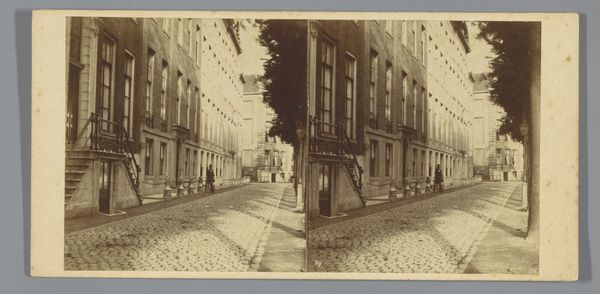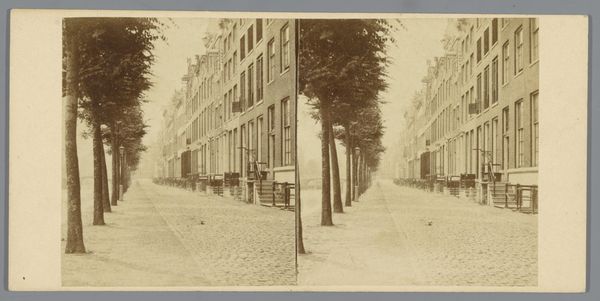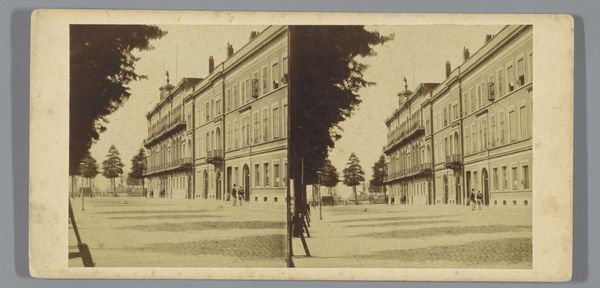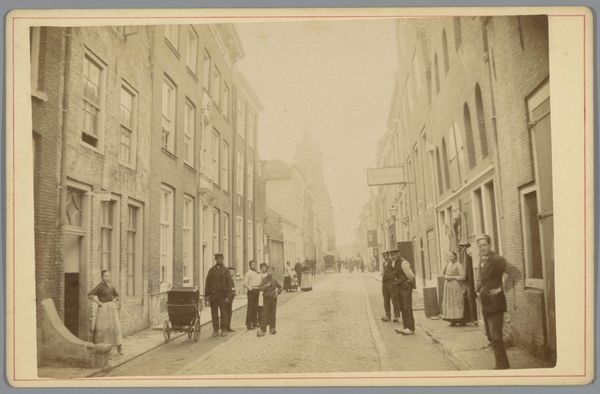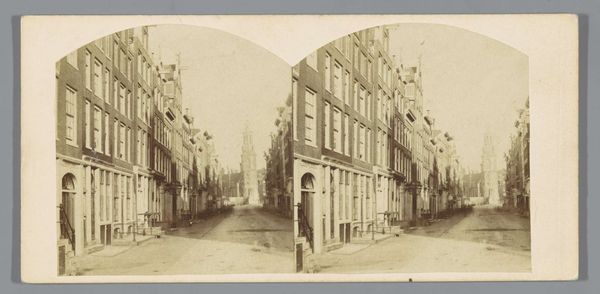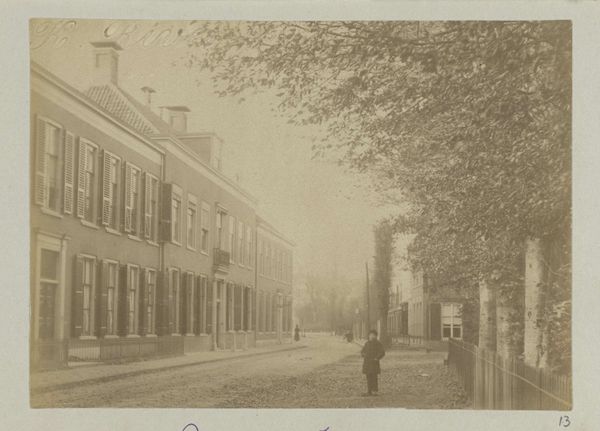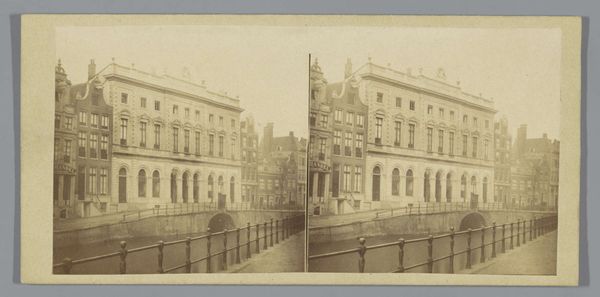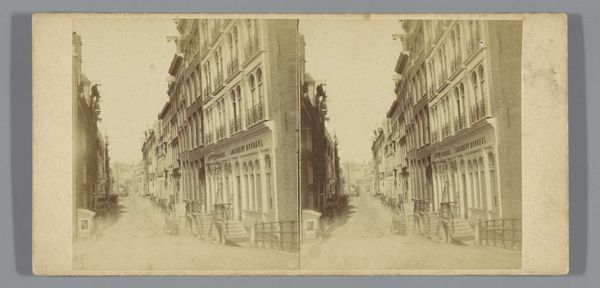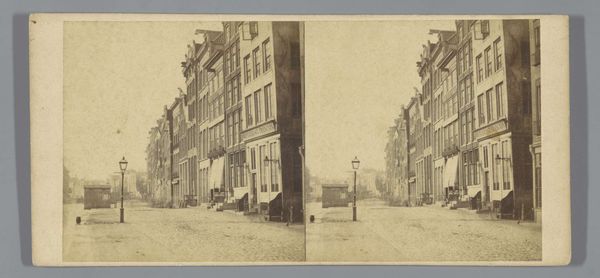
Gebouw van de Nederlandsche Handel-Maatschappij, Herengracht 466, Amsterdam 1859 - 1870
0:00
0:00
photography
#
photography
#
cityscape
#
street
Dimensions: height 85 mm, width 174 mm
Copyright: Rijks Museum: Open Domain
Curator: This captivating cityscape, captured by Pieter Oosterhuis between 1859 and 1870, shows the Gebouw van de Nederlandsche Handel-Maatschappij on Herengracht 466 in Amsterdam. Editor: The tonality of the photograph evokes a wistful sense of history, doesn't it? The sepia tones add to that nostalgic feel, and the sharp lines of the building's facade create a powerful contrast with the textured cobblestone street. Curator: It's not merely a document of architecture, though. Oosterhuis, working in this pivotal era of Dutch colonialism, presents the Dutch Trading Society building as a symbol of burgeoning global power. Note how the building's imposing scale dominates the composition. What ideological weight does that visual dominance carry, do you think? Editor: An astute observation. Scale always conveys intention. Looking closely at the fenestration, I am struck by the repetition of rectangular forms, windows precisely aligned. That strict geometry could speak to the principles of order and efficiency that such a company embodied. Curator: Indeed. It presents a facade of unyielding financial control and expansionism, which directly affected the indigenous populations of colonized nations during this period. The presence of that lone figure in the street almost accentuates the society's all-encompassing power and reach, doesn't it? A tiny person versus an overwhelming economic force. Editor: Perhaps, but there’s also something captivating about the arrangement of the building’s surface—the shadows that the sun casts on the different floors add layers, making it visually quite compelling beyond any explicit social commentary. Curator: The play of light is vital, and, through that visual relationship, you highlight its aesthetic power, without disconnecting it from how its global endeavors and market dominance directly shaped social stratifications of race and capital at the time. It encourages a vital, broader understanding. Editor: An interesting point. In contemplating this image through your lens, I recognize new layers and can explore this photograph with richer insight. Curator: And conversely, your eye reveals that visual systems reflect both societal aims and abstract meaning; not just through critical interrogation but pure formal evaluation too.
Comments
No comments
Be the first to comment and join the conversation on the ultimate creative platform.

